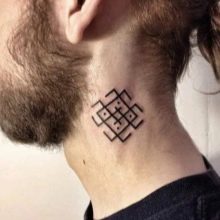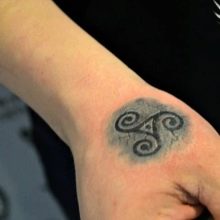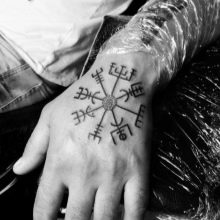Overview of Slavic tattoos
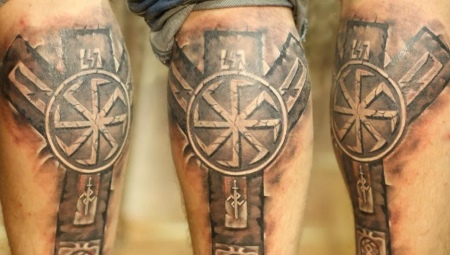
The art of tattooing continues to gain popularity at a rapid pace. Moreover, special attention is paid to tattoos of Slavic themes, because recently they have become very popular. What types of such tattoos exist, and what meaning they have in themselves, we will tell in this article.
Peculiarities
Tattoos with Old Church Slavonic symbols are now very popular. Their history began quite a long time ago and dates back to the ancient Slavs. Not so much is known about this in general. It is only clear that people often applied various designs to their bodies in the form of various signs, runes or patterns. The Slavs believed that they could improve their personal qualities, make them stronger and more confident, or provide protection and mercy from the gods. Each of the applied signs served as a strong talisman for its bearer, provided protection from negative influences from ill-wishers.
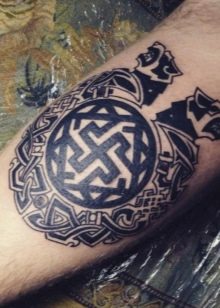
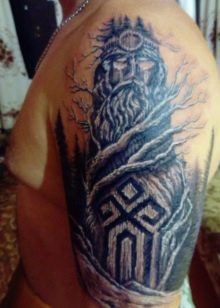
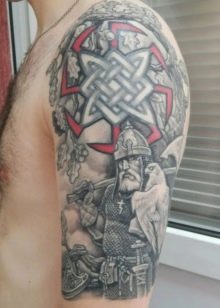
Moreover, at that time it was allowed to apply tattoos only after 13 years. It was believed that by this age the formation of a person is completed. Moreover, only the Magi were engaged in tattooing, because it was they who possessed special knowledge and abilities in this matter.
However, when Christianity appeared, people stopped so actively applying various protective signs to their bodies, because tattoos began to be banned due to the fact that they were associated with paganism. At that time, very active steps were taken to eradicate the culture of the pagans and everything that is associated with it.
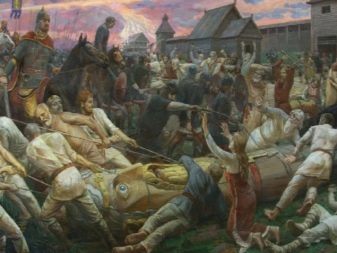
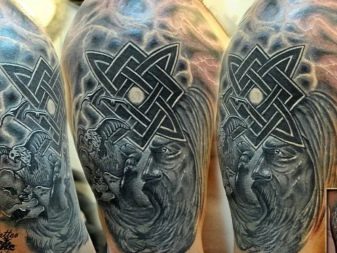
Runes description
Runic symbols of the Slavs are a manifestation of writing in ancient Slavic culture. These signs have a special meaning for history and carry a specific semantic load.
In general, any of the runes is a powerful energy symbol. The meaning of each of them can be studied for a long time, because their interpretation is completely different. So, one rune is interpreted as "rainbow" or "peace", the other - as "strength" or "support".
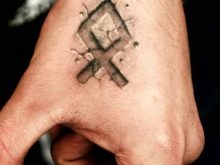

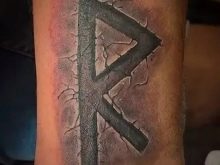
Usually, tattoos depicting runic signs are small, they are applied by both men and women, wishing to attract positive changes into one or another area of their life. However, we note that runologists do not recommend applying such designations to their bodies, because not every person is able to cope with the strong and at the same time very dangerous energy of symbols. Before applying a tattoo, it is better to draw the selected mark with a marker or pen to assess its effect. If it turns out to be positive, then in this case you can safely go to a session at a tattoo parlor.
In addition, you should carefully study the meanings of the runes, as well as their combinations, if you plan to apply several signs at once. Otherwise, you run the risk of attracting negativity, failures and problems into your life, because not all runic combinations symbolize exclusively something positive.
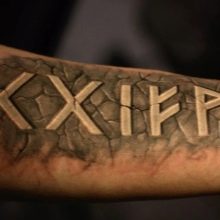
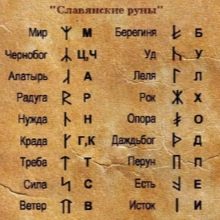
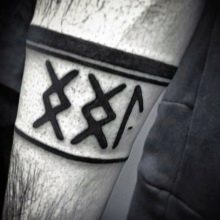
The meaning of the ornament
In the ornaments on the Slavic theme, figures such as triangles, rhombuses, crosses, spirals, points, squares and more prevail. It is believed that such patterns mean fertility, prosperity, connection with natural forces. Usually, feminine patterns are crosses and plant elements in the form of leaves or flowers. But a male tattoo is an image with a crown symbol, which is intertwined with a heart, which means power and strength.
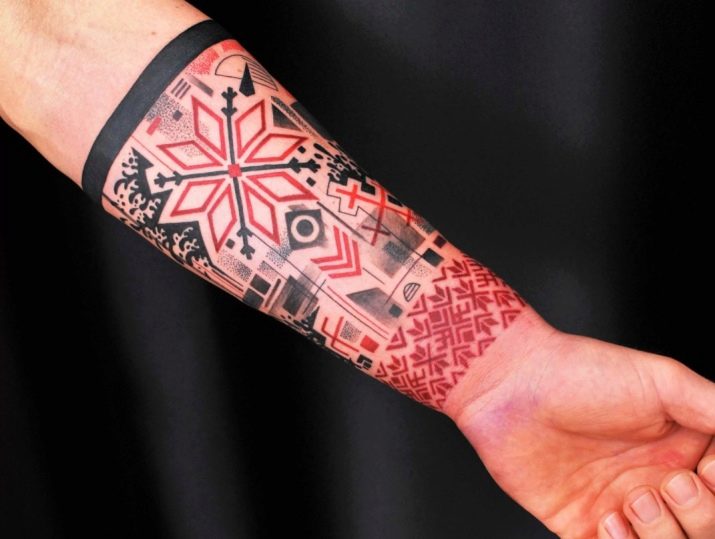
Other tattoos and their sketches
Swastika
But the swastika is perceived by many in a rather ambiguous way, because it evokes associations exclusively with fascist Germany. However, not everyone knows that in fact this symbolism was originally Slavic and did not carry anything bad in itself.
This sign is depicted in the form of a cross, the ends of which are bent clockwise. It symbolizes change, and in their large-scale understanding: the cycle in nature, the change of day and night, the change of seasons. It is believed that this symbol bestows health, positive emotions, vitality, prosperity and balance.
However, some swastika symbols still carry a negative, and therefore, when choosing such a pattern for a tattoo, it is recommended to study it as carefully as possible.
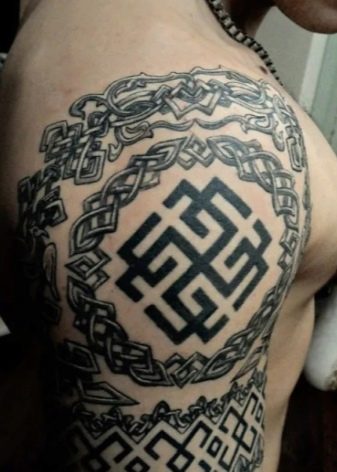
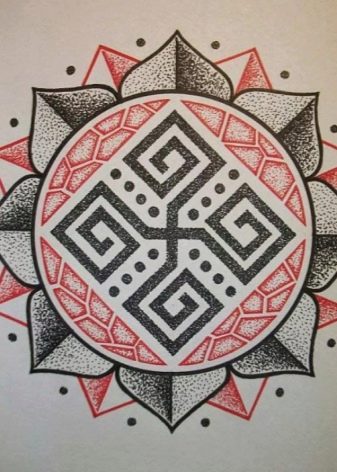
Gods
In ancient Slavic mythology, the gods occupied a special place. They were worshiped, feared, trusted in their mercy. The general meaning of such drawings is power, strength, and also protection from negativity.
The most popular is a tattoo depicting the god Veles, who personified fertility in all areas. It is believed that he is able to bring harmony, craving for self-development, financial well-being, as well as provide assistance to all those whose professional activities are related to medicine or agriculture. In addition, this god and his symbol mean a return to the roots.
The tattoo depicting Perun is no less popular. He, like Thor in Scandinavian mythology, is the god of lightning and thunder, but his main weapon is not a hammer, but an ax. This deity enjoyed special respect among people whose activities were related to military affairs. They applied the symbolism of this god, believing that it would give them courage, strength, and also give them courage.
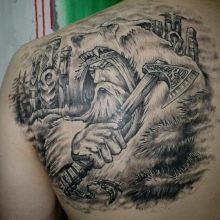
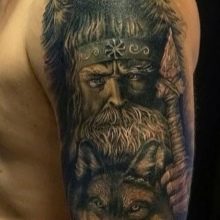
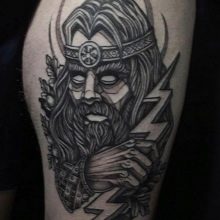
Tattoos depicting the sun god, whose name is Yarilo, are also in demand. He is the son of Veles and patronizes warmth, spring days and fertility. It is believed that a tattoo with him will bring positive changes to life, give its wearer vitality and strength.
The ideas of sketches with Svarog, which, according to Slavic mythology, is the keeper of all living things, are also very common. A tattoo with his image is interpreted as a talisman endowed with tremendous power, because it combines in itself both the divine, the otherworldly, and the human principle.Such a tattoo is especially suitable for those who want to change their life, remove everything unnecessary from it.
Generally speaking, tattoos depicting gods are usually performed in the style of realism, which makes them look quite powerful and effective. As a rule, they are often supplemented with such elements as, for example, inscriptions, Slavic script, various runic symbols and ancient Slavic amulets.
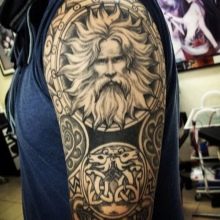
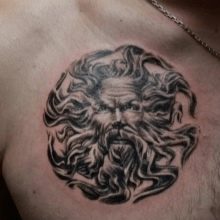
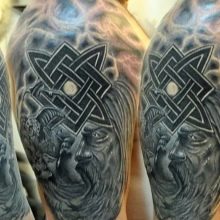
Amulets and charms
Various amulets and amulets were of particular importance for the Slavs. They were made of various materials, and their image was often applied to the skin as a body pattern.
So, the most common amulet was the star. This is a universal sign that brings success and prosperity to a person's life. This drawing is especially suitable for those who suffer from setbacks and all sorts of problems. However, we note that the star of the goddess Lada is an exclusively female symbol. It is believed that this amulet is able to make childbirth easier, as well as provide protection not only to the girl, but also to her child. More often, a tattoo with this sign is recommended to be applied to girls who have recently tied themselves in marriage with their lover.
But the amulet Kolyadnik, considered exclusively male, helps its owner gain eloquence, become wiser and more restrained.
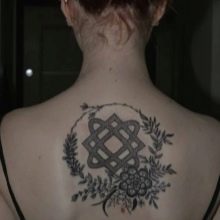
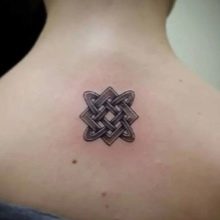
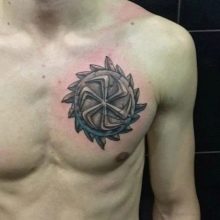
The Valkyrie sign is also masculine, because it is exclusively combat. This symbol was often applied to military weapons. It was believed that in this way the person who owns the weapon gains great strength and courage. The amulet in the form of the ax of Perun has a similar meaning, which allows you to improve the physical strength of a man, his self-confidence.
For women, the Lunnitsa charm is best suited, which is dedicated to the goddess the Great Makosha. It is believed to promote femininity, help maintain coziness in the home, and provide protection from witchcraft. The Ladinets charm has a similar meaning, giving, among other things, health, saving from homeless women.
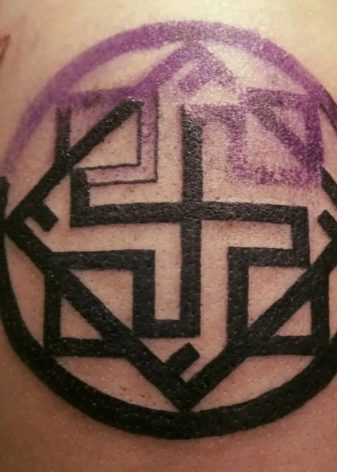
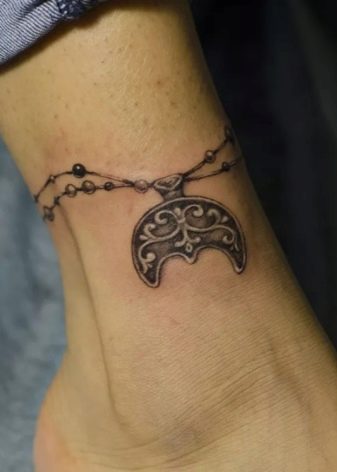
However, note that this interpretation of amulets was more relevant in ancient times, when men were perceived as warriors, and women were engaged in the home and raising children.
Now everything has changed somewhat. Therefore, it is not recommended for women-careerists to wear the aforementioned female amulets, they will not benefit them. In this case, it would be better to take a closer look at men's amulets, which help to improve business acumen and temper character.
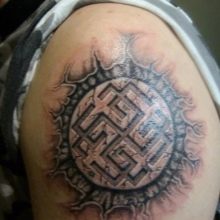
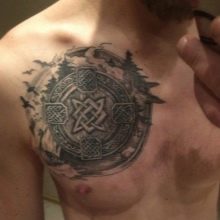
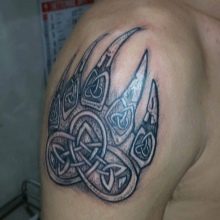
Location options
A tattoo on a Slavic theme can be placed anywhere.
Usually, people prefer to hide drawings with amulets from prying eyes under their clothes, and therefore it would be better to place them on the back, on the shoulder, forearm or chest. In the same places, you can place dimensional drawings with images of deities. They can also be positioned around the sleeve and elbow of the arm.
Runic symbols, in turn, acting as an independent image, would be better placed on the wrist, on the hand or on the neck, but the patterns can be beaten like a bracelet, and it will look quite interesting on both the male and female bodies.
